Natural Language Generation Systems
With advancements in artificial intelligence, natural language generation (NLG) systems have become increasingly popular in various industries. These systems are designed to automatically generate human-like text by processing and interpreting data sets. From generating product descriptions to producing news articles, NLG systems have revolutionized the way content is created.
* NLG systems use AI technology to generate human-like text.
* They have multiple applications across industries.
* They automate the process of content creation.
Key Takeaways
- Natural Language Generation (NLG) systems use AI to generate human-like text.
- These systems have numerous applications across various industries.
- NLG systems automate the content creation process, saving time and resources.
How NLG Systems Work
Natural Language Generation systems work by analyzing structured data and transforming it into coherent, readable text. They follow predefined rules and templates, which allow them to generate text that conveys meaning. With the help of machine learning algorithms, these systems continuously improve their language capabilities. For example, an NLG system analyzing sales data can generate sales reports in a matter of seconds.
NLG systems work in the following steps:
- Data analysis: The NLG system processes structured data.
- Template selection: The system identifies the appropriate template to use.
- Text generation: The system generates text based on the selected template.
- Language refinement: The system applies AI algorithms to improve the language quality.
The Benefits of NLG Systems
Natural Language Generation systems offer several benefits for businesses and content creators:
Imagine generating large volumes of personalized email newsletters with just a few clicks.
- Efficiency: NLG systems automate content creation, reducing the time and effort required.
- Consistency: These systems produce consistent and accurate content, reducing errors and inconsistencies.
- Scalability: NLG systems can generate large volumes of content quickly, making them suitable for scaling businesses.
- Personalization: The systems can customize text to suit individual needs, creating personalized experiences.
- Cost-effectiveness: By automating content creation, NLG systems help save resources and decrease costs.
Applications of NLG Systems
NLG systems can be applied in various industries and use cases:
For example, in the finance industry, NLG systems generate automated investment reports.
| Industry | Application |
|---|---|
| Finance | Automated investment reports, personalized financial advice |
| E-commerce | Product descriptions, customer reviews |
| Media | News articles, sports recaps |
Furthermore, NLG systems can be used for:
Imagine using an NLG system to generate multilingual content for your global audience.
- Automating content generation for email newsletters and social media posts.
- Creating personalized product descriptions based on user preferences.
- Generating multilingual content for global audiences.
- Producing in-depth business reports and summaries.
Challenges and Future Developments
While NLG systems have made significant advancements, there are still some challenges to address:
* Ensuring the accuracy and correctness of generated text.
* Improving the naturalness and coherence of the language.
* Dealing with complex or ambiguous data that can be difficult to interpret.
However, ongoing research and development are continuously improving NLG systems. Future developments may include:
Imagine an NLG system that generates novels with compelling storylines.
- Enhanced language capabilities and improved understanding of context.
- Advanced narrative generation for storytelling purposes.
- Integration with voice assistants and chatbots for more dynamic interactions.
| Benefits | Challenges |
|---|---|
| Efficiency in content creation | Ensuring accuracy and correctness of text |
| Consistency and accuracy | Improving naturalness and coherence of language |
| Scalability for large volumes of content | Handling complex or ambiguous data |
The Future of NLG Systems
As NLG systems continue to develop and evolve, their impact on content creation and various industries will only grow stronger. These systems offer significant advantages for businesses, enabling them to streamline their content creation processes while ensuring quality and consistency. With ongoing research and advancements in AI and machine learning, the possibilities for NLG systems are vast.
Imagine a world where NLG systems effortlessly generate creative and engaging content tailored to individual preferences.

Common Misconceptions
1. Natural Language Generation Systems are only for writing news articles
One common misconception people have about Natural Language Generation (NLG) systems is that they are only used for writing news articles. While it is true that NLG systems are often employed in news organizations to automatically generate news stories, the potential applications of NLG systems extend far beyond the domain of journalism.
- NLG systems can be used to generate personalized product descriptions for e-commerce websites.
- NLG systems can create dynamic and real-time reports in business intelligence and data analytics.
- NLG systems can assist in writing technical documentation and user manuals.
2. NLG systems will replace human writers in the near future
Another misconception is that NLG systems will completely replace human writers in the near future. While NLG systems are indeed becoming increasingly advanced and capable of producing high-quality content, they are not intended to replace human writers. Instead, NLG systems are designed to assist and enhance the work of human writers, saving time and effort.
- NLG systems can automate repetitive writing tasks to free up time for human writers to focus on more creative and complex content.
- Human writers can use NLG systems to generate initial drafts that they can edit and refine, speeding up the writing process.
- NLG systems can provide data-driven insights and suggestions to human writers, helping them improve their content quality.
3. NLG systems can’t understand or interpret the meaning of text
Some people believe that NLG systems are simply “dumb” machines that don’t understand or interpret the meaning of the text they generate. However, this is a misconception. NLG systems today are developed using sophisticated algorithms and techniques that enable them to analyze and interpret data and generate human-like text that conveys meaning.
- NLG systems can comprehend data patterns and relationships to generate coherent and contextually appropriate text.
- Advanced NLG systems can incorporate semantic analysis to understand the underlying meaning of the data they are working with.
- NLG systems can generate text that is tailored to a specific audience or user, indicating a level of understanding and adaptation.
4. NLG systems always produce perfect and error-free content
Another misconception is that NLG systems always produce perfect and error-free content. While NLG systems can generate high-quality text, they are not immune to errors. Like any other software, NLG systems can encounter limitations in understanding complex data or nuances of language, resulting in inaccuracies or grammatical mistakes.
- NLG systems may struggle with understanding and accurately presenting ambiguous or contradictory data.
- Errors can occur when NLG systems try to generate text for highly specific or niche topics that have limited training data available.
- Human supervision is still necessary to ensure the quality and accuracy of the content generated by NLG systems.
5. NLG systems are only accessible to technical experts
Lastly, there is a misconception that NLG systems are only accessible to technical experts or developers with advanced programming skills. While NLG systems do require technical expertise to develop and customize, there are now NLG platforms and tools available that make it easier for non-technical users to utilize and benefit from NLG technology.
- NLG platforms often provide user-friendly interfaces and templates that allow non-technical users to generate text without coding.
- Some NLG tools offer natural language interfaces, enabling users to interact with the system using regular language instead of complex programming commands.
- Training and tutorials are available to help non-technical users understand and leverage NLG systems effectively.

Types of Natural Language Generation Systems
There are various types of Natural Language Generation (NLG) systems that are designed to convert structured data into human-readable text. Each system has its own unique features and capabilities.
1. Rule-Based NLG Systems
Rule-Based NLG systems rely on predefined rules and templates to generate text based on input data. These systems are commonly used for generating simple narratives and reports.
2. Template-Based NLG Systems
Template-Based NLG systems utilize pre-designed templates that are filled with data to generate text. These systems are often used for creating personalized emails and customer support responses.
3. Example-Based NLG Systems
Example-Based NLG systems analyze a collection of existing texts to generate new text based on similar structures and patterns. These systems are useful for generating product descriptions and news articles.
4. Statistical NLG Systems
Statistical NLG systems use statistical models and algorithms to generate text based on patterns identified in data. These systems are commonly employed in machine translation and weather forecast generation.
5. Hybrid NLG Systems
Hybrid NLG systems combine multiple techniques and methods to generate text. These systems are flexible and can adapt to various data types, making them suitable for various applications.
Applications of Natural Language Generation
Natural Language Generation (NLG) has applications across different industries and domains, enabling efficient communication and data interpretation.
Data Analytics
NLG is utilized in data analytics to create insightful reports and summaries from complex data sets. It helps users understand trends and patterns, enabling informed decision-making.
Financial Reporting
In the financial sector, NLG is used to generate real-time reports on market trends, stock performance, and investment opportunities. It simplifies complex financial information for users.
E-commerce Product Descriptions
NLG is employed in e-commerce platforms to generate persuasive product descriptions. It highlights key features and benefits, enhancing the overall user experience.
News Article Generation
NLG systems can automatically generate news articles by analyzing data sources and creating summaries. This streamlines the process of content creation for news organizations.
Personalized Marketing
By utilizing NLG, personalized marketing content, such as tailored emails and product recommendations, can be automatically generated based on individual user preferences and behaviors.
The Benefits of Natural Language Generation
Natural Language Generation (NLG) systems offer numerous benefits, revolutionizing the way information is communicated and processed.
Improved Data Interpretation
NLG enables easy interpretation of complex data by transforming it into understandable language. This helps both experts and non-experts alike make sense of the information.
Time and Cost Efficiency
With NLG, the process of generating written content can be automated, saving time and reducing costs. It eliminates the need for manual writing and proofreading tasks.
Scalability and Consistency
NLG systems can quickly generate vast amounts of text consistently and reliably. This ensures that the generated content meets a uniform standard across different applications.
Enhanced User Experience
NLG enables the creation of personalized and engaging content that enhances the user experience. It can adapt to individual user preferences, leading to higher customer satisfaction.
Increased Productivity
By automating the generation of written content, NLG frees up time for professionals to focus on other tasks, increasing overall productivity and efficiency in various industries.
In conclusion, Natural Language Generation (NLG) systems have revolutionized the way data is transformed into human-readable text. With various types of NLG systems available, such as rule-based, template-based, and example-based, organizations can utilize NLG in applications ranging from data analytics to personalized marketing. The benefits of NLG include improved data interpretation, time and cost efficiency, scalability and consistency, enhanced user experience, and increased productivity. As NLG technology advances, it will continue to play a significant role in streamlining communication and data analysis processes.
Frequently Asked Questions
What are Natural Language Generation (NLG) Systems?
Natural Language Generation (NLG) Systems are computer programs that convert structured data into human-like language, enabling computers to generate coherent and contextually appropriate text.
How do NLG Systems work?
NLG Systems utilize algorithms and linguistic rules to analyze and interpret structured data, and then use templates or machine learning techniques to generate human-readable text in a natural language format.
What are the applications of NLG Systems?
NLG Systems have various applications, including automatic report generation, content creation, personalized messaging, chatbots, data interpretation, and more. They can be used in industries such as finance, e-commerce, healthcare, and customer support.
What are the advantages of using NLG Systems?
Some advantages of NLG Systems include faster production of high-quality content, scalability, reduction of manual effort and cost, customization and personalization capabilities, and enhanced user engagement and satisfaction.
What are the limitations of NLG Systems?
Although NLG Systems have advanced significantly, they still face limitations such as difficulty in handling complex nuances and emotions, potential bias in generated content, lack of human creativity, and occasional grammatical errors.
What is the difference between NLG and Natural Language Processing (NLP)?
NLG focuses on generating human-like text from structured data, while NLP deals with understanding, manipulating, and processing natural language to enable machines to comprehend and interact with humans.
Can NLG Systems support multiple languages?
Yes, NLG Systems can be designed to support multiple languages. The underlying algorithms and linguistic rules need to be tailored for each language to ensure accurate and contextually appropriate text generation.
Are NLG Systems able to understand and respond to user queries?
No, NLG Systems primarily focus on generating text from structured data. Understanding and responding to user queries require Natural Language Understanding (NLU) capabilities, which are often addressed separately through technologies like Natural Language Processing (NLP).
What are the popular NLG tools and frameworks available?
Some popular NLG tools and frameworks include OpenAI’s GPT-3, Google’s DeepMind, Arria NLG, Automated Insights’ Wordsmith, and Narrative Science’s Quill. These tools provide developers with resources to build NLG Systems efficiently.
What is the future of NLG Systems?
The future of NLG Systems looks promising. As technology continues to advance, we can expect improved language understanding, enhanced creativity in generated content, better integration with other AI technologies, and wider adoption across industries.




